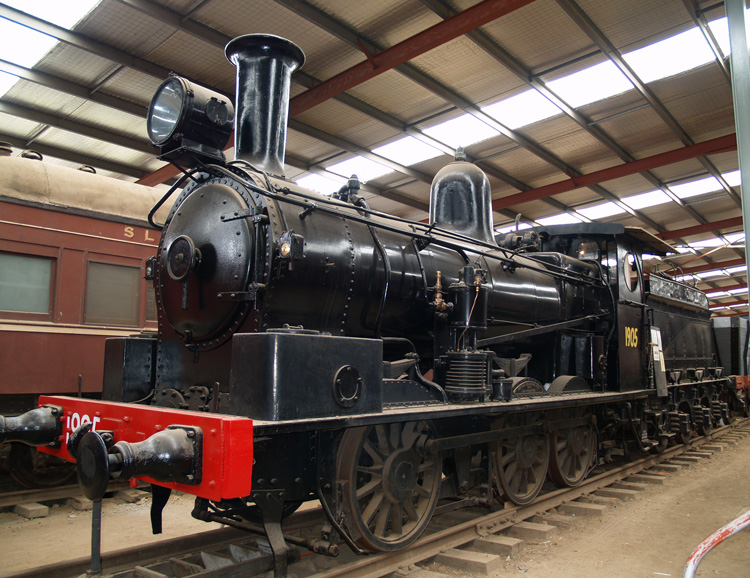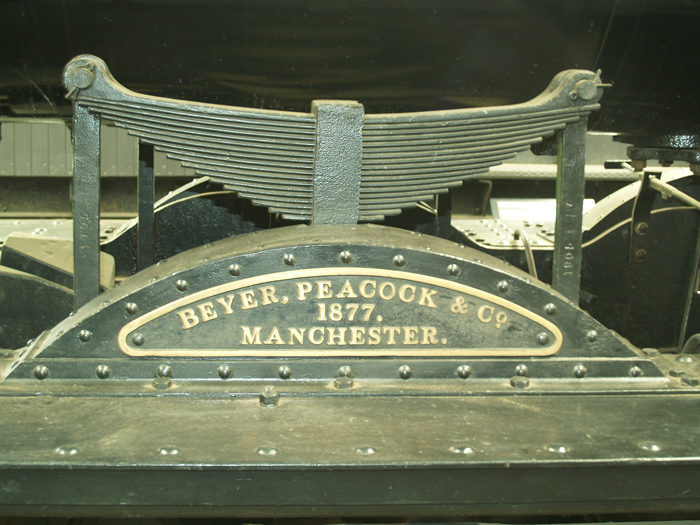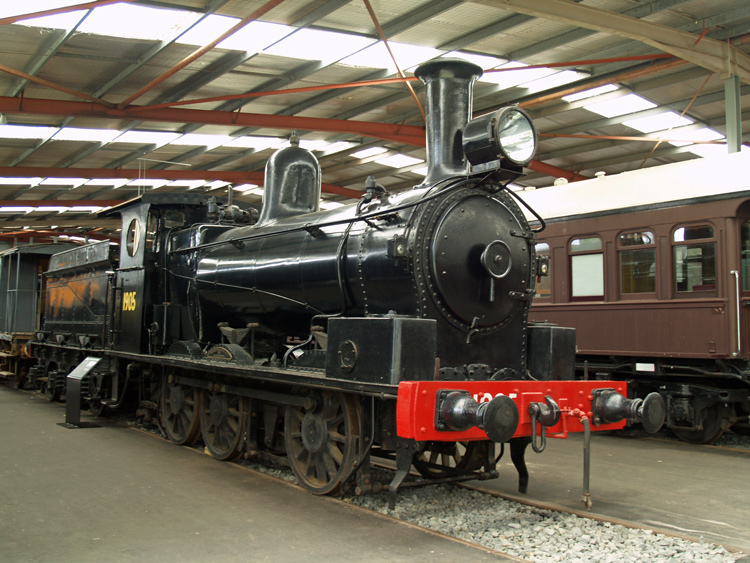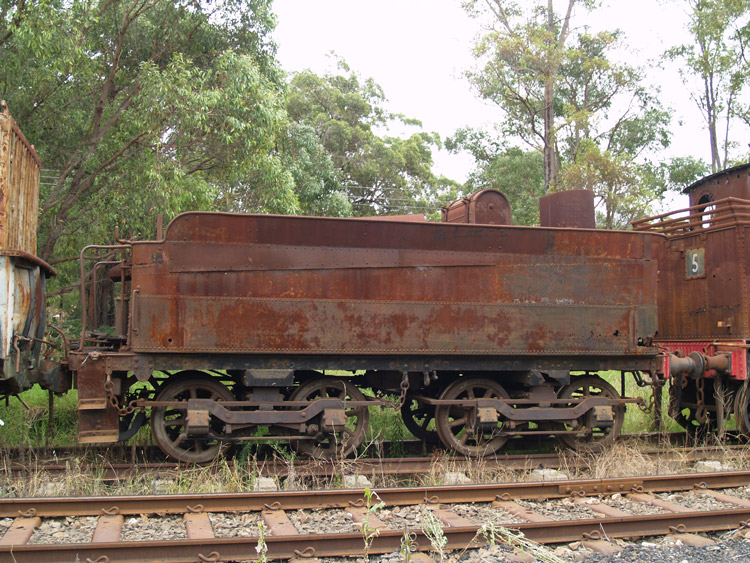|
|
1905 First locomotive to cross the Sydney Harbour Bridge |
|

Statically restored 1905 displayed at the NSWRTM on 23 November
2008.
|
Builder |
Beyer Peacock
& Co, Manchester |
|
Builder’s Number & Year |
1647 of 1877 |
|
Wheel Arrangement |
0-6-0 |
|
No. in class |
77 |
|
NSWGR
History 1905
was built by Beyer Peacock & Co in 1877 as the fifth of an initial order
for 6 heavy freight locomotives of the A(93) class
and originally given the road number 97. The A(93) (later known
as the (Z)19 class) represented the final NSWGR development of the "long
boiler" 0-6-0 design, and went on to number 77 locomotives supplied by a
number of builders. The
(Z)19 class locos were progressively superseded by
more powerful 2-6-0 and later 2-8-0 freight designs, however they found a
niche as light-line motive power on steeply graded mountain branches such as
the Batlow / Kunama, Oberon and Dorrigo lines, as well as shunting engines. Another niche was in large locomotive
depots, where a light but powerful loco was required to propel coal hoppers
up the incline to the top of the coaling stage. (One of the webmaster's earliest memories is
of 1904 or 1923 performing this duty at Port Waratah in 1972, towards the end
of NSWGR steam.) 1905
earned a special place in history as the first locomotive to cross the Sydney
Harbour Bridge, albeit on a construction works train. Withdrawal
& Preservation 1905
was retained for preservation in the New South Wales Rail Transport Museum
(NSWRTM) collection following its withdrawal from NSWGR service. It was transferred from the NSWRTM Enfield
to Thirlmere site on 17 June 1975 when towed (together with 5711) by 3801;
photos show 1905 was service-weathered at this stage and the loco
deteriorated further in the early years of open display at NSWRTM Thirlmere
(prior to construction of the display hall). Full
restoration for static display began in 1983 with 1905 jacked-up onto blocks
and the wheels dropped out to allow cleaning and de-rusting between the
frames. The restoration proceeded
slowly but thoroughly over the following 22 years, with all components
removed, de-rusted, primed and top-coated. Missing components were replaced, tender
rust holes were patched and the wooden cab roof replaced. The restoration was largely complete by 2005
when 1905 was moved into the display hall, with some nice finishing touches
subsequently applied such as electricity supply to the marker lights. Today 1905 is a far cry from its rusted and
worn state of 1983 and is a credit to the volunteers of the NSWRTM static
restoration team. The NSWRTM
is also home to a Baldwin J-483 class bogie tender which was last attached to
sister 1957 (whose road number it still bears) for use on the Oberon line. |

Beyer Peacock & Co. builders plate over the central wheel splasher. 2 March 2014.

Restored 1905 displayed at "Trainworks", the former NSWRTM at Thirlmere.

Cab view of 1905
displayed at Trainworks, highlighting the “Thow” porthole cabside.
New canvas blinds have been fitted during restoration.

This Baldwin tender (last attached to 1957) is stored at Thirlmere.
It appears to be ex-J 483 or J 131 class 2-8-0.
It is heavily patched after a long career.
References
|
a |
"A Compendium of New South Wales Steam
Locomotives" compiled by Alex Grunbach, published by the Australian
Railway Historical Society, New South Wales Division, 1989. |
|
b |
Webmaster's
observation or comment |
Page updated: 6 November 2014
|
Government Railways: |
|
|||||||||
|
Private & Industrial Railways: |
|